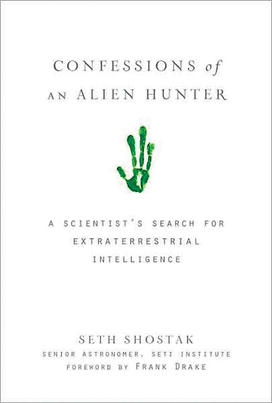Listening for aliens
Seth Shostak ’65 recounts his search for extraterrestrial intelligence

Seth Shostak ’65 has been looking for signs of intelligent life in the universe for decades. Although that’s merely a blink in galactic history — and while no hard evidence of life on other planets has surfaced — Shostak is more bullish than ever that the search for extraterrestrial intelligence, or SETI, someday will be successful.
Researchers have uncovered one indication after another that life may be possible elsewhere in the universe, explains Shostak in Confessions of an Alien Hunter: A Scientist’s Search for Extraterrestrial Intelligence, published by National Geographic in March. For instance, scientists have found extremophiles, primitive organisms that can survive Earth’s coldest and hottest conditions, which suggests that life could exist in other harsh climates.
But Shostak is most encouraged by the sheer number of worlds that might provide conditions favorable to life. NASA’s recently launched Kepler mission will survey the nearby portions of the Milky Way to determine how many stars have planets and how many of those are capable of supporting life. Even if only 1 in 1,000 planets is deemed favorable, the Milky Way has 1 trillion planets, meaning there are “a billion possible worlds just in our galaxy,” he says. “It is hard to believe that all of these planets are just sitting there doing nothing interesting.”
In Confessions of an Alien Hunter, Shostak, a senior astronomer for the past 18 years at the privately run SETI Institute in Mountain View, Calif., recaps the history of man’s search for intelligent life in the universe, especially the use of radio telescopes to sift through the universe’s radio signals. The telescopes allow researchers to determine whether any of the signals can be traced to a source other than humans or inanimate nature. They might be “pings” sent by other life forms in the hope of finding life elsewhere in the universe, or else they could be communications signals between aliens that leaked out into the ether, Shostak says.
Researchers so far have come no closer than the occasional false alarm, but there’s time. Shostak compares the portion of the Milky Way so far explored by SETI researchers as being equivalent to just one grain of sand in a full dump truck.
Shostak has been interested in astronomy since he was 8. He majored in physics at Princeton and studied galaxies using radio telescopes in graduate school. These days he does a bit of research and a lot of outreach. When he speaks to the public, he senses widespread openness to the possibility of intelligent life elsewhere. Says Shostak: “The majority thinks it’s plausible that we’re not the only game in town.”
Louis Jacobson ’92 is a contributing editor with National Journal magazine.













No responses yet